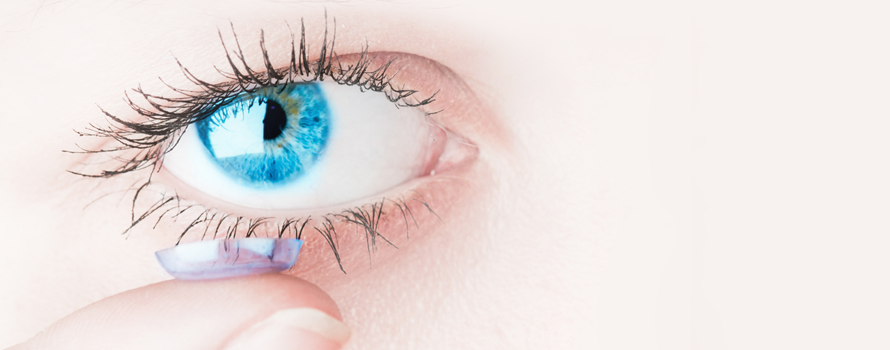
What contact lenses can do
Contact lenses can correct short-sightedness (myopia), far-sightedness (hyperopia) and astigmatism.
Contact lenses have been around for more than a 100 years. Today’s contact lenses are so developed that just about anyone can use them. If you were told in the past that you couldn’t wear contact lenses, odds are that’s not true today.
Before you buy
Your optician will give you expert advice before and after you buy contact lenses. There are different lens types to suit most wearers and the latest technology and materials makes them comfortable and easy to wear.
Your optician will help you choose the right type of lens based on lens suitability, your visual requirements and personal preference.
Contact lens assessment
To wear contact lenses, you need a current glasses prescription. The optician will also carry out a contact lens assessment to ensure that the lenses will be suitable for your eyes. They will make sure that the recommended lenses fit properly, are comfortable to wear and that your eyes are healthy.
Contact lens materials
Most lens brands are made from hydrogel plastics or more recently from silicone hydrogel. Silicone hydrogel can allow more oxygen to pass through the lens to the eye, and they make your eyes less prone to dehydration.
Contact lens wearing time
Contact lenses can usually be divided into:
- Daily wear – must be removed every night
- Extended wear – can be worn overnight, usually for seven days in a row, without removal
- ‘Continuous wear’ can be worn for 30 consecutive nights.
Disposable contacts
Even with proper care, contact lenses (especially soft contacts) should be replaced frequently to prevent the build-up of lens deposits that increase the risk of eye infections.
Soft lenses
- Daily disposable lenses – throw away after one day’s wear
- Disposable lenses – throw away every two weeks, or sooner
- Frequent replacement lenses – throw way every month or quarter
- Traditional (reusable) lenses – throw away every six months or longer.
Contact lens designs
- Spherical contact lenses are the typical, rounded design of contact lenses, which can correct short
sightedness (myopia) or long-sightedness (hyperopia) - Bifocal contact lenses contain different areas for near and far vision
- Orthokeratology lenses are specially designed to reshape the cornea during sleep, providing lens-free daytime wear
- Toric contact lenses correct for astigmatism, as well as for myopia and hyperopia.
Contact lens care
Cleaning, disinfecting and storing contact lenses is much easier than it used to be.
Most people can use ‘multipurpose’ solutions – meaning that one product both cleans and disinfects, and is used to store the lenses.
Some people who are sensitive to the preservatives in multipurpose solutions might need preservative-free systems, such as those containing hydrogen peroxide.
You can avoid lens care altogether when you wear daily disposable contact lenses.
Finding the perfect lens
You will often have to use trial and error to find the perfect lens. People react differently to various lens materials and cleaning solutions.
The correct size and shape of your lens can be finalised only after you have successfully worn the lens. This is especially true for more complex fits like bifocals or toric contact lenses for astigmatism.
If you find contact lenses uncomfortable or that they give you poor vision, chances are that an adjustment or change of lens can help. If you don’t feel comfortable about your lenses or you are not seeing well, ask your optician for advice.



